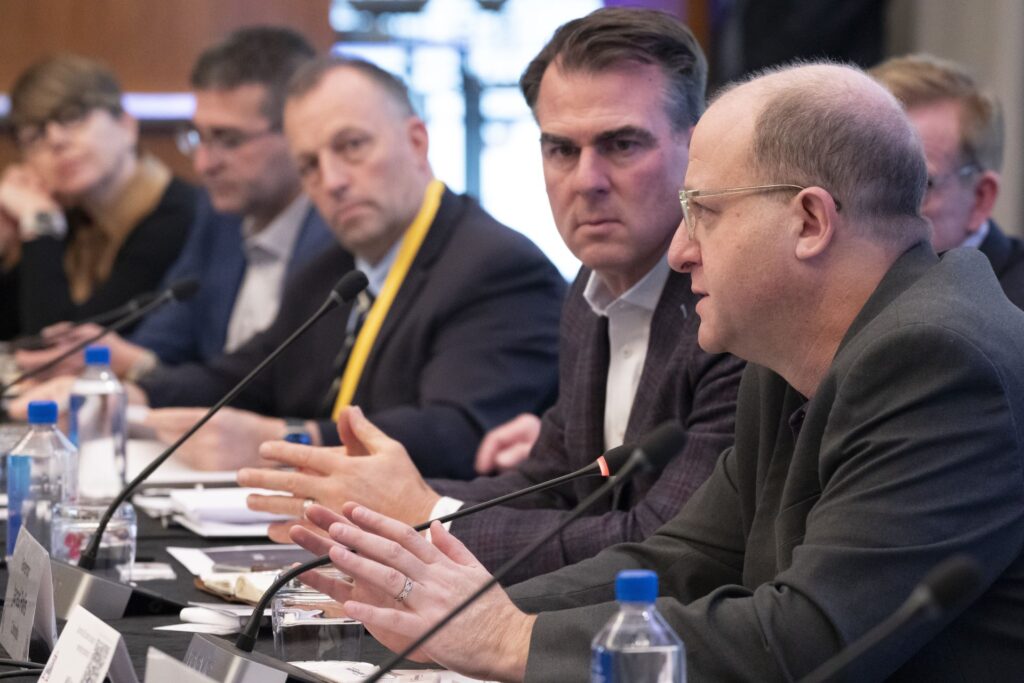
State governors are emerging as powerful players in U.S. national politics, shaping policy debates, influencing federal decisions, and building platforms for presidential runs. Through emergency management, economic strategies, and culture-war positioning, governors today wield unprecedented authority. Their visibility in media, bipartisan influence, and direct ties to citizens make them critical voices that increasingly define America’s national agenda.
Why Are State Governors Becoming So Powerful in National Politics?
The role of governors has always been critical to America’s political fabric. Traditionally, governors focused on state-level responsibilities—managing budgets, ensuring public safety, administering education systems, and enforcing state laws. But in the 21st century, the role has expanded. Governors are now stepping into the national spotlight more than ever before, often eclipsing U.S. senators and members of Congress in public visibility.
This shift is partly due to frustration with gridlock in Washington, D.C. When Congress stalls, governors act. Their ability to make executive decisions, enact policy quickly, and directly address their citizens has elevated them to national prominence.
Take Florida Governor Ron DeSantis, who positioned himself as a national conservative leader by challenging federal COVID-19 mandates. On the other side of the spectrum, California Governor Gavin Newsom has framed his state as a progressive alternative, leading on climate policy, healthcare, and reproductive rights. Both demonstrate how state-level leadership can become central to national debates.
The public sees governors as pragmatic leaders who often deliver results faster than Congress. In doing so, they increasingly become the faces of America’s biggest policy battles.
How Do Governors Use Crises to Shape National Conversations?
Crises are catalysts for political influence. When disaster strikes, the spotlight naturally falls on governors, who must respond quickly and effectively. Their decisions often set the tone for the national conversation.
- COVID-19 Pandemic: Governors such as Andrew Cuomo of New York gained national visibility with daily televised briefings. His updates became appointment viewing across the country, sometimes overshadowing the White House itself.
- Natural Disasters: When hurricanes hit Florida or wildfires ravage California, governors like DeSantis and Newsom step into leadership roles that command national attention. Their emergency responses ripple through national debates on infrastructure, climate change, and preparedness.
- Economic Recessions: Governors also step into the economic spotlight. During downturns, they may push stimulus checks, tax cuts, or state-level aid packages that influence broader federal conversations.
By managing crises, governors can demonstrate leadership qualities that resonate beyond state borders. For voters across the nation, seeing a governor rise to the occasion can transform them into household names and viable presidential contenders.
Are Governors Becoming Key Players in Presidential Elections?
Absolutely. The governorship is often a launching pad for the presidency. Historically, U.S. presidents such as Bill Clinton (Arkansas), George W. Bush (Texas), Jimmy Carter (Georgia), and Ronald Reagan (California) first gained prominence as governors. The executive experience of running a state translates well to the national stage.
In modern elections, governors often:
- Build national donor networks through campaign committees and political action committees.
- Showcase state-level achievements as “policy laboratories” for the country.
- Present themselves as problem-solvers who can cut through Washington gridlock.
Michigan Governor Gretchen Whitmer is widely seen as a rising star within the Democratic Party, with many speculating about her presidential potential. Similarly, DeSantis leveraged his position in Florida to mount a presidential campaign. Governors often enter the national race with a ready-made narrative—leaders who know how to get things done.
How Are Governors Influencing Federal Policy Without Congress?
Governors are not just waiting for Congress or the president to act. Instead, they are actively influencing national policy in three major ways:
- Interstate Alliances: Governors frequently join forces with their peers. For instance, the U.S. Climate Alliance, formed after the Trump administration withdrew from the Paris Agreement, committed member states to climate goals independent of federal leadership.
- Litigation Against the Federal Government: Governors often direct their attorneys general to sue the federal government. Texas has sued the Biden administration dozens of times on issues ranging from immigration to environmental policy.
- Policy Pilots: States act as laboratories of democracy. California leads the way on emissions standards, while states like Florida are testing new models of education reform. These policies often inspire or challenge federal action.
Through these methods, governors effectively bypass Congress, influencing national outcomes from the state level.
How Has Media Changed the Role of Governors in National Politics?
The media landscape has transformed the way governors interact with the public. In the past, their influence was largely confined to state borders. Today, social media, cable news, and digital outlets amplify their messages to national—and even global—audiences.
- Daily press briefings during COVID-19 propelled governors like Cuomo and DeSantis to national stardom.
- Governors such as Newsom have run political ads in other states, positioning themselves as leaders in nationwide ideological battles.
- Social media allows governors to bypass traditional journalism and communicate directly with voters, donors, and activists across the country.
This media amplification means that governors no longer need a national office to shape the national narrative. Their policies, tweets, and press appearances can trend within hours, redefining political debates nationwide.
How Do Culture Wars Enhance Governors’ Influence?
Cultural and social issues have become some of the most powerful tools for governors seeking national influence. By legislating on divisive issues, they capture the attention of voters and the media beyond their state lines.
- Florida’s “Don’t Say Gay” Law: Championed by DeSantis, the bill made him a national figure in conservative circles, sparking debates across the country.
- Michigan’s Abortion Rights Defense: Governor Gretchen Whitmer has framed Michigan as a bulwark of reproductive rights following the Supreme Court’s overturning of Roe v. Wade.
- Texas and Immigration: Greg Abbott has made border security a national issue by implementing state-led initiatives that challenge federal immigration authority.
These battles resonate far beyond state borders, polarizing voters and rallying national donor bases. For governors, culture wars provide an opportunity to shape the national conversation and position themselves as leaders of ideological movements.

In What Ways Do Governors Use Economic Strategies to Gain National Prominence?
Economic stewardship remains one of the most powerful ways governors can project influence. States are microcosms of the national economy, and governors often use their policies as examples of success—or cautionary tales—for the rest of the country.
- Tax Cuts and Deregulation: Governors like Kristi Noem of South Dakota and DeSantis highlight low-tax environments to attract businesses and residents, framing their states as models of conservative growth.
- Tech and Innovation Hubs: Newsom leverages California’s dominance in Silicon Valley as evidence that progressive policies can drive innovation and prosperity.
- Labor Rights and Wages: Democratic governors often use state-level minimum wage increases or union protections to show that worker-centered policies can succeed.
By linking state economic outcomes to national ideologies, governors expand their influence beyond their borders.
How Are Governors Reshaping the Balance of Power Between States and the Federal Government?
The U.S. system of federalism has always created tension between state and federal powers. Recently, governors have leaned into that tension, testing the limits of their authority.
- Defying Federal Mandates: Governors sometimes refuse to enforce federal directives, particularly on healthcare, education, and climate.
- Forming State Compacts: Groups of states often work together to bypass Washington gridlock. The Climate Alliance is one prominent example.
- Litigation: Governors, particularly Republicans, frequently challenge what they see as federal overreach in court.
This growing assertiveness has reshaped the balance of power, with governors framing themselves as defenders of local autonomy against an overreaching federal government.
How Are Bipartisan Governors Expanding Their National Reach?
While partisan conflict dominates headlines, some governors are gaining influence by leaning into bipartisanship. Leaders like Vermont’s Phil Scott (Republican) and Maryland’s former governor Larry Hogan (Republican) have built reputations for crossing party lines.
Their pragmatic leadership appeals to independents and moderates, positioning them as credible voices in a polarized era. Bipartisan governors often become national media favorites, receive invitations to high-profile forums, and even emerge as presidential prospects. By refusing to engage in hyper-partisan politics, they build credibility across a broader national audience.
10 FAQs About Governors’ Growing National Influence
Q1: Why do governors often run for president?
Governors gain executive experience similar to the presidency, making them strong candidates for national leadership.
Q2: How much power do governors have compared to senators?
Governors wield executive authority in their states, while senators focus on legislation. In times of crisis, governors often have more immediate visibility.
Q3: Can governors override federal laws?
No. Federal law is supreme. However, governors can resist implementation, delay compliance, or challenge laws in court.
Q4: Which governors are most influential today?
Ron DeSantis, Gavin Newsom, Gretchen Whitmer, Greg Abbott, and Kristi Noem consistently make national headlines.
Q5: How do governors affect midterm elections?
They mobilize voters, shape narratives, and their endorsements can swing congressional races.
Q6: Why are governors more visible than mayors?
Governors lead entire states, giving them broader platforms and greater national relevance.
Q7: How do governors collaborate across party lines?
Through organizations like the National Governors Association, which allows bipartisan cooperation on shared challenges.
Q8: Do governors shape Supreme Court cases?
Yes. Many state laws, especially on abortion, gun rights, and voting, end up being reviewed by the Court.
Q9: How are governors using social media?
They bypass traditional press to connect directly with voters, shape national debates, and grow their influence.
Q10: What issues are likely to amplify governors’ influence in 2025?
Immigration, healthcare, climate policy, education reforms, and the future of AI-driven job markets.
Final Takeaways: Why Governors Matter More Than Ever
State governors are no longer just local administrators—they are central players in America’s national politics. By managing crises, leading cultural debates, driving economic strategies, and challenging federal power, they are reshaping the country’s political landscape.
